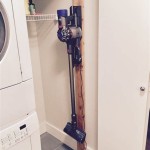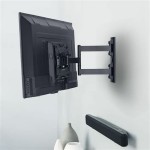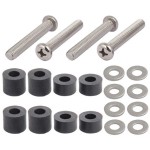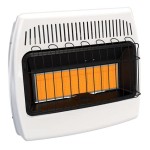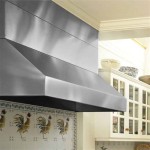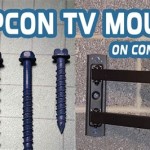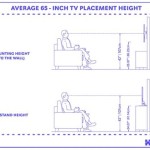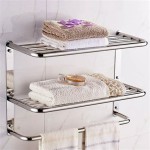Mounting Your TV to a Wall Without Studs: A Comprehensive Guide
Mounting a television on a wall offers several advantages, including space optimization and improved viewing angles. However, traditional wall mounting often relies on securing the television bracket to wall studs for stability and weight support. In situations where studs are not ideally located or are inaccessible, alternative methods are required. This article provides a detailed overview of options for mounting a TV to a wall without the presence of traditional wooden or metal studs.
Before proceeding with any mounting method, it is crucial to assess the wall's composition. Drywall or plasterboard are common interior wall coverings, but their inherent weakness necessitates careful consideration. Determining the type of wall material is paramount for selecting the appropriate mounting hardware and technique. Solid walls, such as concrete or brick, require specialized drilling and anchoring methods, while drywall or plasterboard necessitate the use of anchors designed to provide sufficient support without studs.
Safety is the utmost priority. Always consult the television manufacturer's specifications regarding weight limitations and mounting requirements. Overloading a wall without adequate support can result in damage to the television, the wall, and potentially cause injury. It is also essential to disconnect the television from the power source before commencing any installation work and to wear appropriate safety gear, such as eye protection and gloves.
Understanding the Limitations and Considerations
Mounting a television without studs inherently presents certain limitations. The weight capacity of the wall anchors becomes the primary factor determining the size and weight of the television that can be safely installed. It's important to meticulously calculate the total weight of the television, including any accessories that will be attached, such as soundbars or media players.
The location of electrical outlets and cable connections also plays a crucial role. Hiding cables within the wall requires careful planning and may necessitate professional assistance to ensure compliance with local building codes and safety regulations. Alternatively, cable management solutions, such as cable concealers or raceways, can be used to organize and hide cables along the wall surface.
Furthermore, the viewing angle and intended use of the television should be considered. If the television will be viewed from multiple locations or if tilting or swiveling is desired, the mounting bracket must be capable of accommodating these movements while maintaining stability. Choosing a bracket with appropriate articulation is essential for optimizing the viewing experience.
Wall composition is a significant factor. While drywall anchors are designed to hold a reasonable amount of weight, concrete or brick walls often necessitate specialized drilling techniques and heavier-duty anchors. Attempting to use drywall anchors in a solid wall will likely result in failure and potential damage.
Utilizing Drywall Anchors for TV Mounting
Several types of drywall anchors are available, each with varying weight capacities and installation methods. Selecting the appropriate anchor depends on the television's weight and the thickness of the drywall. It is imperative to choose anchors that are specifically designed for television mounting and that meet or exceed the weight requirements.
Toggle bolts are one of the strongest types of drywall anchors. They consist of a bolt with a spring-loaded wing that expands behind the drywall when inserted. This creates a secure hold that can support significant weight. Installation typically involves drilling a hole through the drywall, inserting the toggle bolt, and tightening the bolt until the wing expands and secures the anchor. The size of the hole required for toggle bolts is usually larger compared to other types of anchors.
Molly bolts are another type of anchor that provides a strong hold. They function by expanding behind the drywall as the bolt is tightened. This expansion creates a wider contact area, distributing the weight more evenly. Molly bolts are suitable for mounting heavier items, but installation requires careful tightening to avoid stripping the threads or damaging the drywall.
Self-drilling drywall anchors, also known as screw-in anchors, are designed to be installed without pre-drilling a hole. They feature a sharp tip that allows them to be screwed directly into the drywall. While they are easy to install, their weight capacity is generally lower compared to toggle bolts or molly bolts. Self-drilling anchors are best suited for lighter televisions or applications where less weight support is required.
When installing drywall anchors, it is crucial to follow the manufacturer's instructions precisely. Over-tightening the anchors can damage the drywall, while under-tightening can result in insufficient support. Ensuring that the anchors are properly seated and that the weight is evenly distributed is essential for a secure and reliable installation.
The number of drywall anchors used is also critical. Using more anchors than recommended may seem like a way to increase support, but it can weaken the drywall if the anchors are placed too close together. Conversely, using too few anchors can compromise the stability of the mount. Consult the anchor manufacturer's guidelines for the recommended number of anchors based on the television's weight and the type of drywall anchor used.
Exploring Alternative Mounting Solutions
While drywall anchors are a common solution for mounting televisions without studs, alternative methods may be more suitable in certain situations. One such method involves using a specialized "no-stud" TV mount. These mounts are designed to distribute the weight of the television across a larger area of the wall, reducing the stress on any single point. They often incorporate multiple anchors or a wider mounting plate to achieve this.
Another alternative is to install a horizontal support structure behind the drywall. This can be achieved by cutting a section of drywall and inserting a piece of wood or metal that spans between two studs. The support structure is then attached to the studs, providing a solid base for mounting the television. This method requires more extensive modifications to the wall but provides a significantly stronger and more stable mounting platform.
For renters or individuals who prefer to avoid making permanent modifications to the wall, a freestanding television stand is a viable option. These stands are designed to support the television without requiring any wall mounting. They are available in various styles and sizes to accommodate different television models and room layouts. Freestanding stands offer flexibility and portability, allowing the television to be easily moved or repositioned as needed.
In cases where the wall is particularly weak or damaged, reinforcing the wall may be necessary before mounting the television. This can involve adding additional layers of drywall or installing a backer board behind the existing wall. Reinforcing the wall provides a more solid base for the anchors and helps to distribute the weight more evenly.
For heavier televisions or situations where maximum security is required, professional installation is highly recommended. Professional installers have the experience and expertise to assess the wall's structure, select the appropriate mounting hardware, and ensure that the television is securely and safely installed. They can also provide guidance on cable management and other installation considerations.
Regardless of the mounting method chosen, it is essential to regularly inspect the installation for any signs of looseness or damage. Check the anchors periodically to ensure that they are still securely seated and that the television is not sagging or tilting. Addressing any issues promptly can prevent more serious problems from developing.
Proper planning and execution are critical for successfully mounting a television to a wall without studs. Taking the time to assess the wall's composition, selecting the appropriate mounting hardware, and following the manufacturer's instructions carefully will help to ensure a safe, secure, and visually appealing installation.

How To Mount A Tv On The Wall Without Studs It

How I Hung My Tv With No Studs

How To Mount Tv On Wall No Studs

Mount It No Stud Tv Wall For Screens Up To 80 In Mi 376 The Home

Best Way To Attach Tv Mount Just Drywall

No Stud Tv Wall Mount Low Profile Heavy Duty Vesa For Up To 80 Inch Display 110lb 5

Mounting Tv On Plaster Wall No Studs

Tv Mount With No Studs Bogleheads Org

No Stud Tv Wall Mount Low Profile Heavy Duty Vesa For Up To 80 Inch Display 110lb 5

How To Mount A Tv On Plaster Wall Without Studs

